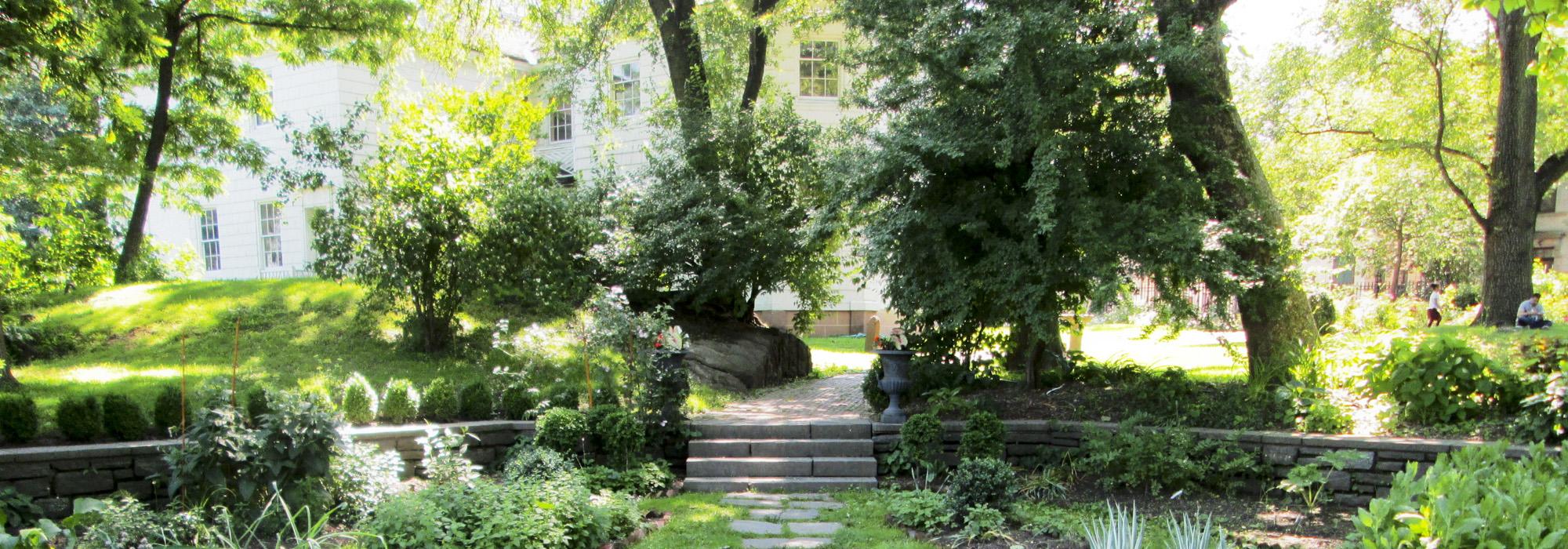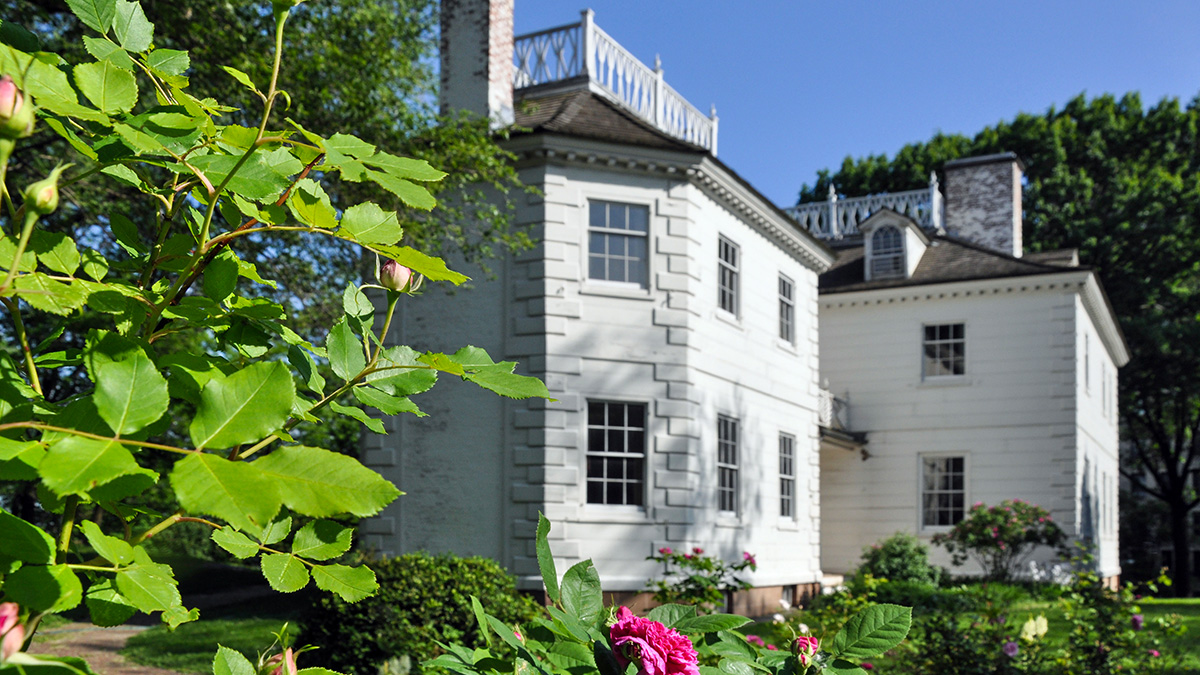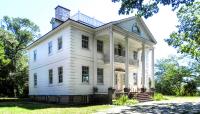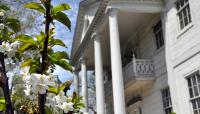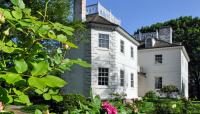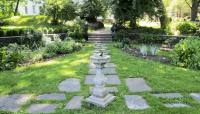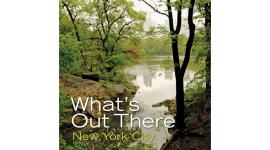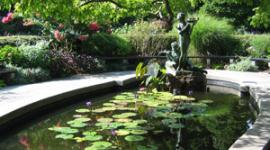Landscape Information
Built in 1765 as a summer villa by English Colonel Roger Morris, the Morris estate once stretched over 130 acres from the Harlem to the Hudson River on one of the highest points in Manhattan. The 1.5-acre park includes the mansion and its gardens, and is bordered by 160th Street, Jumel Terrace, 162nd Street, and Edgecombe Avenue. The house briefly served as George Washington’s headquarters during the Revolutionary War, and later as the home of Aaron Burr. The site was sold to the New York City Department of Parks in 1903, and has since been operated as a house museum and park.
Situated on a steep slope supported by a masonry retaining wall, the landscape has been repeatedly modified to suit the site’s changing roles. In 1934, the Works Progress Administration constructed stone paths, a larger entryway, a sunken garden northeast of the house, and a fence surrounding the site. The sunken garden is surrounded by a stone retaining wall with an octagonal brick building at its southwest corner. The garden is divided into quadrants by flagstone paths and features a central sundial, each quadrant containing brick-lined planting beds. Grassy lawns shaded by mature trees are located to the north and west of the house, and to the rear of the house is a garden containing rare and heritage roses. The park is accessed via a gate on its eastern edge. The mansion was designated a National Historic Landmark in 1961, listed in the National Register of Historic Places in 1966, and sits within the Jumel Terrace Historic District, situated on the former Morris estate and listed on the National Register of Historic Places in 1973.



